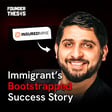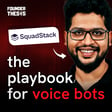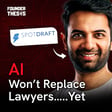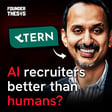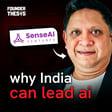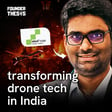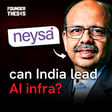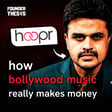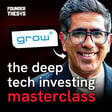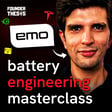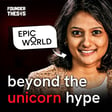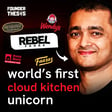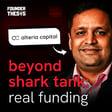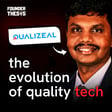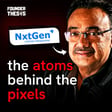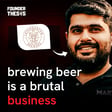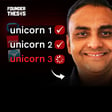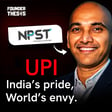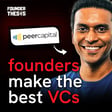
Purpose, Pivots & Building Altigreen's EV Dream | Dr. Amitabh Saran
"What do you want to be remembered for?"
This was the pivotal question posed to Dr. Amitabh Saran during a corporate workshop at Hewlett-Packard that dramatically shifted his perspective on his career and life's work. It wasn't about being a good son or brother, but about tangible contributions to the planet. This profound moment of reflection eventually guided his impactful entrepreneurial journey towards founding Altigreen Propulsion Labs, a company aimed at solving India's critical transportation and environmental challenges.
Dr. Amitabh Saran is the Founder & CEO of Altigreen Propulsion Labs, an innovative Indian electric vehicle (EV) company that has successfully raised nearly $50 million in funding, with major backers including Reliance New Energy. Under his leadership, Altigreen has developed a significant patent portfolio with over 29 patents granted across more than 60 countries, focusing on creating EVs "Made in India, Made for India."
Key Insights from the Conversation:
- The "Epitaph" Moment: A simple question about one's legacy can be a powerful catalyst for re-evaluating your life's work and driving you towards more purposeful ventures.
- Solving for India, by India: Instead of merely replicating Western models, there's immense opportunity and need for building products and services tailored to India's unique challenges and environment.
- From Software to Hard Tech: The journey of an entrepreneur can take unexpected turns, leveraging foundational skills (like computer science) to tackle complex hardware and manufacturing challenges in new industries like EV.
- Pivoting with Vision: Knowing when to pivot a business—like moving from a content platform to being acquired, or from being a component supplier to a full-fledged OEM—is crucial for the long-term realization of a founder's vision.
Chapters:
- 00:00 Introduction to Altigreen and Its Focus
- 01:28 Amitab's Early Career and Inspirations
- 07:54 First Startup: Computer Telephony Software
- 10:10 Second Startup: Buzzing Town's Focus
- 21:57 The Pivotal Question About Contributions
- 27:50 Genesis of Altigreen and Motivations
- 31:57 Innovation and EV Technology Development
- 40:49 Product Development and Testing Phases
- 51:22 OEM Partnerships and Manufacturing Shift
- 01:11:53 Current Status and Future Expansion
